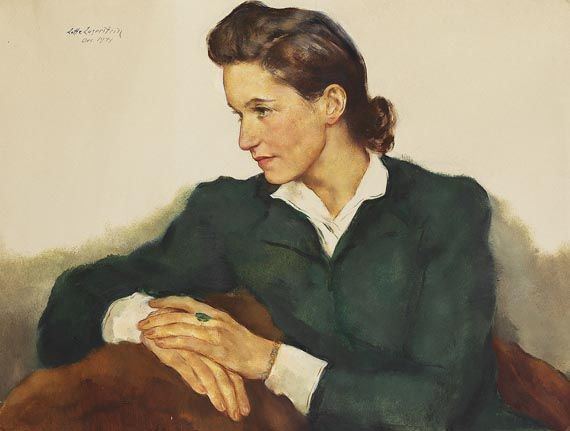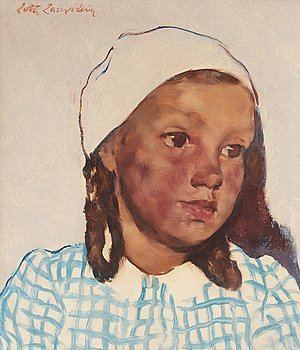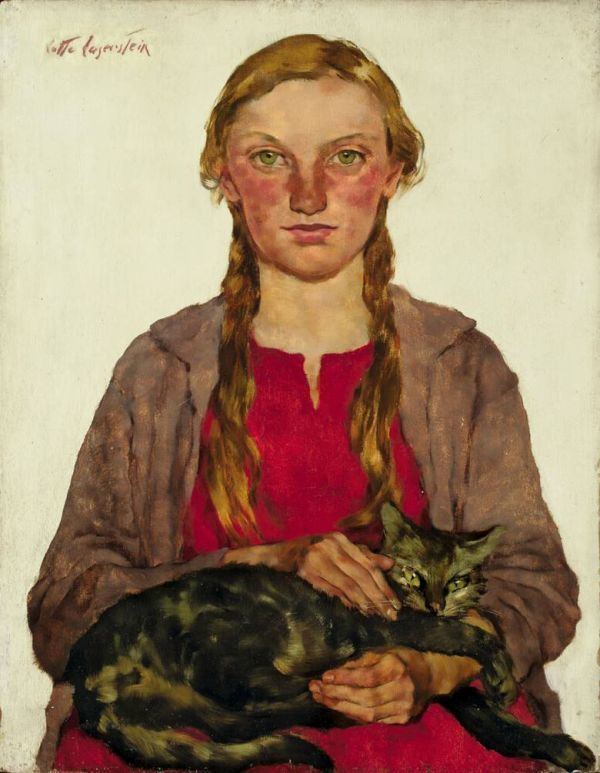Name Lotte Laserstein | ||
 | ||
Died January 21, 1993, Kalmar, Sweden | ||
Lotte laserstein paintings johannes brahms sonate pour violoncelle et piano en fa majeur op 99
Lotte Laserstein (November 28, 1898 in Preussisch Holland, German Empire – January 21, 1993 in Kalmar, Sweden) was a German-Swedish painter and portraitist.
Contents
- Lotte laserstein paintings johannes brahms sonate pour violoncelle et piano en fa majeur op 99
- Lotte Laserstein Von Angesicht zu Angesicht
- Life and work
- Legacy
- References

Lotte Laserstein. Von Angesicht zu Angesicht
Life and work

Laserstein was born in Prussia in 1898 into a Jewish family (her father was half Jewish). Her father Hugo was a pharmacist and her mother Meta was a pianist, piano teacher and a porcelain painter. She received her artistic training at the Berlin Art Academy, which she entered only a couple of years after it had opened its doors to women painters. Here, Laserstein studied under Erich Wolfsfeld. In her final two years at the academy she was his as his 'Atelier Meisterschal' or 'star pupil'. This entitled her to her own studio as well as free access to models. She favoured female models, who she claimed were better at holding long and difficult poses. Traute Rose was her favourite model and tennis coach, and became a lifelong friend of Laserstein's, featuring in many of her works.

Berlin in the 1920s was an uneasy yet exciting place. Laserstein painted cadavers to illustrate text books to obtain cash during the period of hyperinflation. During this time women were growing in independence and were increasingly entering the workplace. Laserstein depicted the New Woman, who also adopted a stereotyped appearance of a masculine look, typically with a man's style haircut. As a single professional woman, Laserstein can be seen to adhere to the definition of the New Woman, and her androgynous look is evident in her many self-portraits, for example, Self-portrait with cat at Leicester Museum and Art Gallery.

While Laserstein was a Jewish artist, her early work was typical of both the avant-garde New Objectivity movement and the extremely traditional backward-looking trends in German art of the period. Her works were peopled with attenuated intellectuals such as one sees in the portraits of Christian Schad (the Portrait of Baroness Wassilko, for example), but her figures also often had a strong, cold, and athletic look that would have made them appropriate for Nazi propaganda posters. A painting of a lady tennis player, bursting with strength, is a good example of the type. Laserstein is difficult to place conclusively in any aesthetic category. There is a sense of emotion and a connection with her models which does not appear to be suited to New Objectivity. Art historians have also argued for her placement within German Realism and German Naturalism.

Laserstein's masterpiece was the large (about 7– 8 feet wide) 1930 painting Abend über Potsdam (Evening over Potsdam) or The Rooftop Garden, Potsdam, a frieze of friends sharing a meal on their terrace, with Potsdam's skyline arrayed in the far distance. The painting was so large that it needed the co-operation of friends to transport it. The mood is pensive and full of ennui.

During the Nazi period in Germany, Laserstein emigrated to Sweden, where she stayed in Stockholm and the city of Kalmar. She created her greatest works in the period between the two world wars. After World War II, her works consisted of inoffensive portraits which lacked the vigour of her early work.
Legacy

Laserstein was rediscovered in 1987, when Thomas Agnew and Sons and the Belgrave Gallery organized a joint exhibition and sale of works she had retained in her personal collection, including Abend uber Potsdam. Laserstein attended the exhibition as she did for another three years later.
Her painting "Traute washing" was the first purchase by the National Museum of Women in the Arts with its own funds.
In 2003, a large retrospective of Laserstein's work was held in Berlin. In-depth research was carried out by Anna-Carola Krausse which was synthesised in the exhibition catalogue, Lotte Laserstein: My Only Reality.
